Carrying keys while running is often essential, whether it’s for accessing your house, car, or gym locker. However, it can present a variety of challenges for runners, from the discomfort of bulky keychains to the irritating noise of keys jingling with every step. Keys can also pose security risks if not secured properly, with the potential to fall out and get lost.

This article aims to address these common issues by providing practical tips on how to run with keys comfortably and securely. We’ll explore different methods and key holders designed specifically for runners, ways to use existing running gear to your advantage, and even technological solutions like keyless entry systems. By the end, you’ll have a comprehensive understanding of how to run with keys without compromising on comfort or security.
Choosing the Right Key Holder
Key Holders Designed for Runners
When selecting a key holder for running, it’s essential to consider designs specifically tailored for runners. Popular options include key wristbands, lanyards, and key clips. Key wristbands are a favorite because they allow runners to keep their keys securely fastened to their wrists. Many wristbands come with zippered pockets or built-in key holders, ensuring there is no discomfort or risk of keys falling out. Lanyards, although less common while running, can also be useful if designed to resist bouncing and securely close around the neck or waist. On the other hand, key clips can be attached to running belts or bags, keeping keys within easy reach and reducing the likelihood of misplacement.
Using a key holder specifically designed for running holds several benefits. These key holders are often made from lightweight, breathable materials that minimize discomfort and prevent skin irritation. They also typically feature secure fastening mechanisms, such as zippers or Velcro, to ensure keys stay in place regardless of movement. Furthermore, these holders are streamlined to be less intrusive, enabling runners to focus on their performance without distraction.
Minimalist Key Holders
Minimalist key holders offer a practical solution for those who prefer a less bulky option. Minimalist key holders are designed to be lightweight and compact, often accommodating only a single key or a slim set of keys. Examples of minimalist key holders include key rings holding just one key or flat key holders lying flush against the body. These holders can be easily tucked into small pockets or attached discreetly to clothing or gear without adding significant weight or bulk.
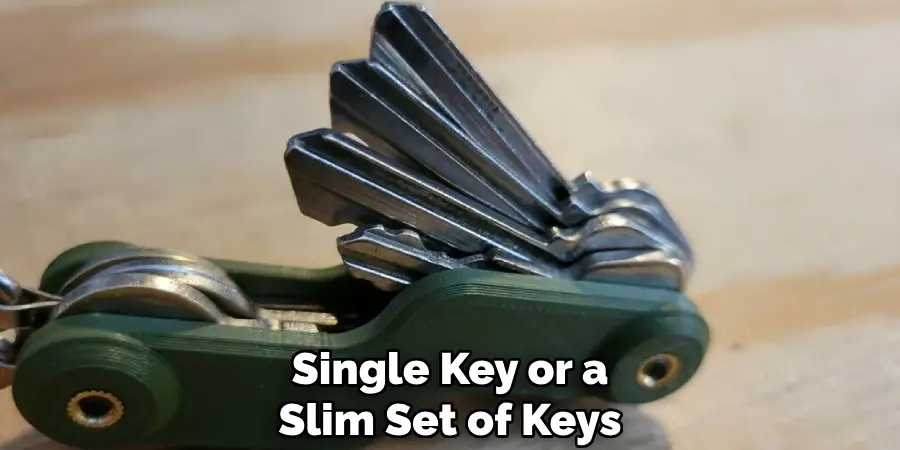
Minimalist key holders are particularly beneficial for runners who want to reduce any excess weight or bulk during their run. By minimizing the number of keys carried and opting for sleek, slim designs, runners can enjoy a more comfortable and streamlined running experience.
How to Run with Keys: Using Pockets and Running Gear
Running Shorts and Leggings with Pockets
Running shorts and leggings with built-in pockets have become essential for runners who prefer carrying their keys without needing additional accessories. When choosing running apparel with pockets, there are several crucial features to look for to ensure convenience and security. One of the most important aspects is the placement and design of the pockets. Pockets positioned on the sides or at the back, especially if they are zippered, are ideal for minimizing movement and bounce, ensuring your keys stay put. Look for pockets with secure closures such as zippers, Velcro, or flaps, as these will prevent your keys from slipping out during vigorous activity.
The pocket material is also key. Stretchable fabrics that mold to the shape of the keys will keep them snug against your body, reducing any discomfort or jostling. Additionally, pockets made from moisture-wicking materials will help keep your keys dry and protected from sweat. By paying attention to these features, runners can choose shorts or leggings that provide a secure, comfortable way to carry their keys without any added hassle.
Running Belts and Waist Packs
Running belts and waist packs are highly advantageous for carrying keys and other small items. These gear accessories are designed to be worn around the waist, providing runners a practical and hands-free solution. Running belts typically feature several compartments holding keys, smartphones, energy gels, or other essentials. The snug fit of running belts ensures that the contents remain secure and bounce-free, providing convenience and peace of mind.

When choosing a running belt, look for models that offer adjustable straps to comfortably fit various body sizes. The belt should be made from lightweight, breathable materials to prevent irritation or chafing during long runs. Additionally, the compartments should have secure closures like zippers or snap buttons to keep your keys and other items safe.
Some models also include reflective elements to enhance the functionality of running belts and ensure added safety during low-light conditions. Similarly, waist packs serve the same purpose but are usually slightly larger, offering more storage space while still effectively securing keys. By selecting the right running belt or waist pack, runners can comfortably carry their keys and other essentials, ensuring an unobstructed and enjoyable running experience.
How to Run with Keys: Securing Keys to Your Body
Attaching Keys to Your Shoelaces
One effective method of securing your keys while running is to attach them to your shoelaces. You can keep your keys safe without any additional gear by using a key loop or a small carabiner. Here’s a step-by-step guide:
- Prepare Your Key Loop or Carabiner: Choose a small, durable key loop or carabiner that can attach securely to your shoelaces. Make sure it is made of lightweight material to avoid adding extra weight.
- Thread the Loop or Carabiner Through the Key: Insert your key through the loop or attach it to the carabiner. Ensure it is securely fastened to avoid accidental loss.
- Lace Up Your Shoes: Slide the key loop or carabiner onto one of the shoelace ends before tying your shoelaces.
- Secure the Key: Tie your shoelaces as you normally would, ensuring the key loop or carabiner is snugly positioned. Ensure the key is secured close to the shoe’s tongue or on the side of the laces.
- Adjust for Comfort: Test your setup by moving around to ensure the key does not dangle or cause discomfort. The key should remain firmly in place and not interfere with your running motion.
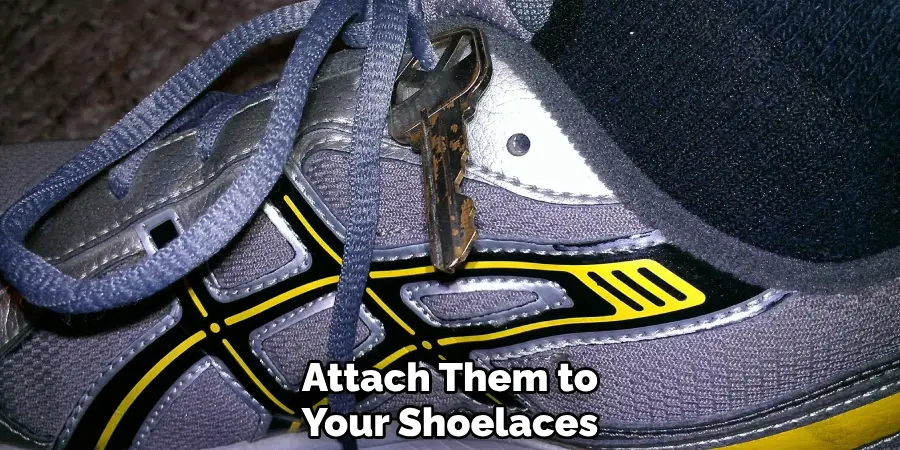
By following these steps, you can securely attach your keys to your shoelaces, allowing for a hassle-free run without additional accessories.
Wearing Keys on a Wristband
Another practical method for carrying your keys is to wear them on a wristband. Key wristbands are specially designed to keep your keys accessible and secure. Here’s how to use a key wristband effectively:
- Select the Right Wristband: Opt for a wristband with a zippered pocket or built-in key holder. Look for bands made from stretchable, breathable fabric to ensure a comfortable fit.
- Insert the Keys: Place your keys inside the wristband’s pocket or holder. Make sure the keys are fully enclosed and the zipper or closure is securely fastened.
- Wear the Wristband: Slide it onto your wrist, adjusting it for a snug fit. The wristband should not be too tight, as this can cause discomfort, nor too loose, which could lead to the keys slipping out.
- Test for Comfort: Move your wrist around to check that the wristband stays in place and does not chafe. The keys should remain secure without bouncing or causing irritation.
Benefits of using a key wristband include easy access to your keys and the added security of having them attached to your person. Wristbands with zippered pockets or built-in key holders provide peace of mind, allowing you to focus on your run without worrying about losing your keys.
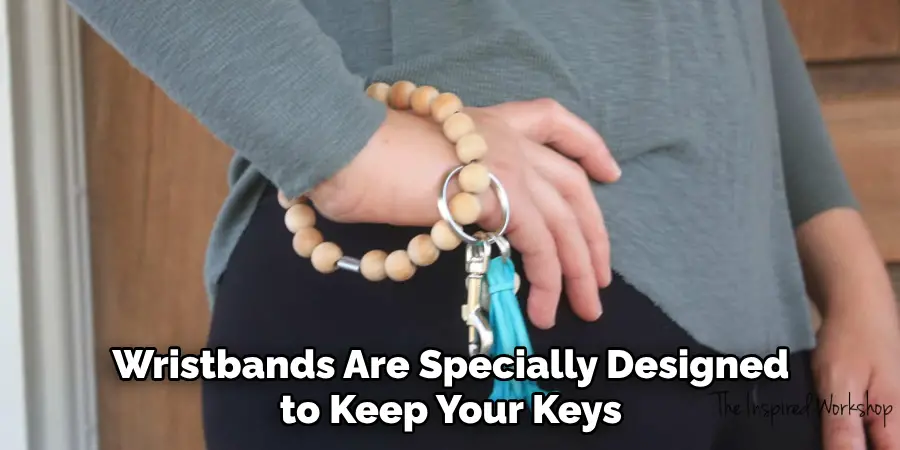
Using Technology for Keyless Entry
Keyless Entry Systems
Keyless entry systems for homes and cars have revolutionized the way we think about carrying keys. These systems use advanced technology such as RFID, Bluetooth, or Wi-Fi to grant access without the need for a physical key. For vehicles, keyless entry typically involves a fob that must be close to the car to unlock it or start the engine. For homes, keyless systems often use a keypad or a smartphone app to unlock doors.
The benefits of keyless entry systems are significant for runners. Runners can enjoy a more comfortable and carefree experience without the burden of carrying physical keys. There’s no need to worry about keys jangling in pockets or the risk of losing them on the trail. Additionally, the convenience of keyless entry means less preparation time before a run, as there’s no need to search for and secure keys.

Using Smart Locks
Smart locks further enhance the convenience of keyless entry by allowing users to control access to their homes through smartphone apps. These locks can be easily integrated into a home’s existing security system and provide features like remote locking and unlocking, temporary access codes for guests, and activity logs to monitor entry.
To set up a smart lock, select a model compatible with your door and meets your security needs. Follow the manufacturer’s instructions for installation, which usually involves replacing your existing lock with the smart lock hardware. Once installed, download the corresponding app and pair it with your new smart lock.
For added security, ensure your smartphone is protected with a strong password or biometric authentication, such as fingerprint or facial recognition. Regularly update the smart lock’s firmware and app to benefit from the latest security features. By using smart locks, runners can leave their homes knowing they can easily secure and access them without physical keys, making for a more streamlined and secure running experience.
Reducing Noise and Discomfort
Wrapping Keys to Prevent Jingling
One simple yet effective method to prevent keys from jingling while you run is to wrap them with materials such as tape, rubber bands, or fabric. Here’s how you can use these materials to reduce noise:
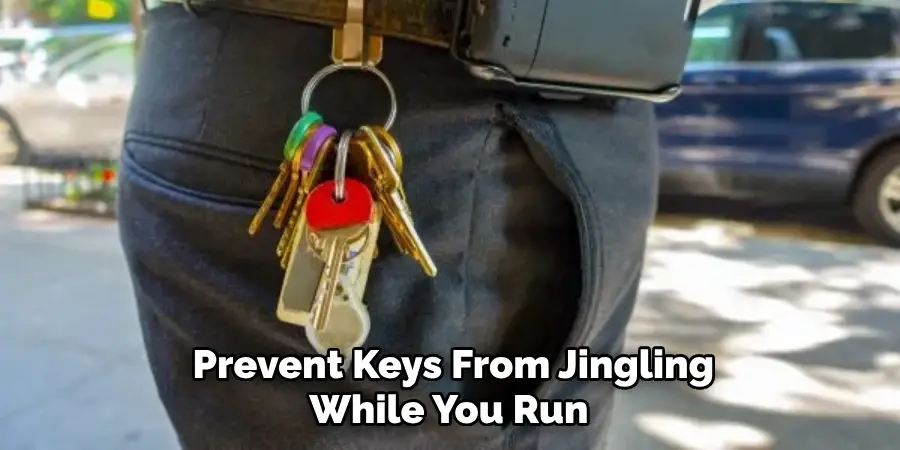
- Tape: Wrap your keys in electrical or duct tape. This creates a soft barrier around the metal, preventing keys from clinking against each other. Ensure the tape is wrapped tightly and smoothly to avoid sharp edges.
- Rubber Bands: Small rubber bands can be used to bundle your keys together. Stretch a few rubber bands around your keys, securing them tightly in place. This stops the noise and keeps your keys compact and easy to handle.
- Fabric: For a more comfortable and aesthetic solution, consider wrapping your keys in a piece of fabric. Cut a small piece of soft cloth, such as microfiber or cotton, and fold it around your keys. Secure the fabric with a few stitches, a safety pin, or even some adhesive Velcro strips.
Using Noise-Dampening Key Holders
Noise-dampening key holders are designed to minimize the noise keys make when they move. These products provide a secure and organized way to carry your keys, ensuring you run in peace without the distraction of jingling sounds.
- Description: Noise-dampening key holders typically encase your keys in a protective shell or sleeve, holding them firmly in place. The materials used are often soft, such as silicone or padded fabric, which absorb and diminish the sound. Some designs allow you to slot each key into place individually, reducing the chance of metal-on-metal contact.
- Examples of Products:
- KeyBar: This key holder functions like a Swiss Army knife for keys, with a sturdy aluminum frame that holds multiple keys securely between two plates.
- Orbitkey: A sleek leather or silicone key holder that wraps around your keys, keeping them neatly stacked and silent.
- KeySmart: Made from aircraft-grade aluminum, this key organizer allows you to hold several keys in a compact, folding design that eliminates jingling.
By using these techniques and products, runners can significantly reduce the noise and discomfort associated with carrying keys, ensuring a more enjoyable and focused running experience.
Safety and Security Tips
Avoiding Visible Key Placement
The importance of keeping keys out of sight cannot be overstated when it comes to preventing theft or loss. Visible keys can attract unwanted attention and increase the risk of someone attempting to steal them. Consider using running gear with specialized hidden pockets to ensure your keys remain hidden. Many running shorts, leggings, and tops come equipped with discreet, zippered pockets designed to hold keys and other small items securely. Alternatively, you can conceal your keys under your clothing using a waistband pouch or a specially designed-wristband.
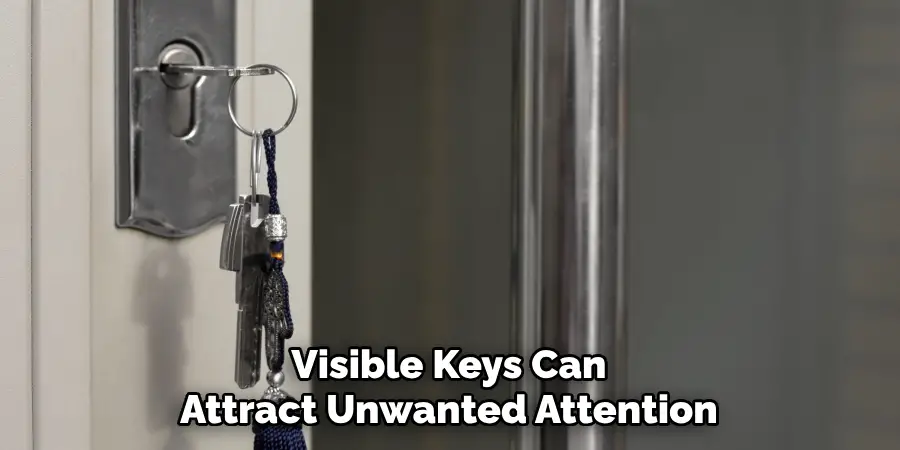
Ensuring Key Security
Before starting your run, always double-check that your keys are securely fastened and cannot easily fall out. This simple step can save you the hassle and stress of losing your keys mid-run. For added peace of mind, consider using backup security measures. One effective method is memorizing a key code for keyless entry systems, ensuring you can still access your home or car even if your keys are misplaced. Leaving a spare key with a trusted friend or family member also provides an extra layer of security. In case of an emergency or a misplaced key, you’ll have a reliable backup without compromising your running routine.
Practical Tips for Different Types of Runs
Short Runs vs. Long Runs
When preparing for short runs, convenience and minimalism are key. For these brief outings, consider using a simple wristband or a fabric pouch that can hold your keys securely without adding bulk. The goal is to keep your hands free and maintain comfort. On the other hand, it’s essential to focus on security and comfort for longer runs, as you’ll be on the move for an extended period. A running belt with a secure zippered pocket or a noise-dampening key holder can balance accessibility and silence, helping you stay focused on your run without distractions.
Group Runs and Races
The group runs, and races present unique challenges when it comes to carrying keys. One practical solution is to utilize bag check services often provided at organized races. These services allow you to safely store your belongings, including your keys, while participating. Alternatively, when available, secure lockers can offer a safe and convenient option. If neither is available, consider using a running belt or an armband with a zippered pocket specifically designed to hold small essentials. This ensures that your keys remain secure and easily accessible throughout the event.
Conclusion
Understanding “how to run with keys” effectively can significantly enhance your running experience by blending comfort and security. We’ve explored various methods such as choosing the right key holder, using specialized running gear, and securing keys to the body. Keyless entry technology offers a modern solution, while noise-reduction techniques, like wrapping keys or using noise-dampening key holders, ensure a peaceful run. Ensuring the safety of your keys through concealed storage and backup plans like spare keys or memorized codes is vital.
The key to a seamless run is balancing these methods to suit your needs. I encourage you to experiment with different techniques and products to find the best for you. By preparing adequately and investing time into finding the optimal solution, you can enjoy a hassle-free and focused running experience every time.
